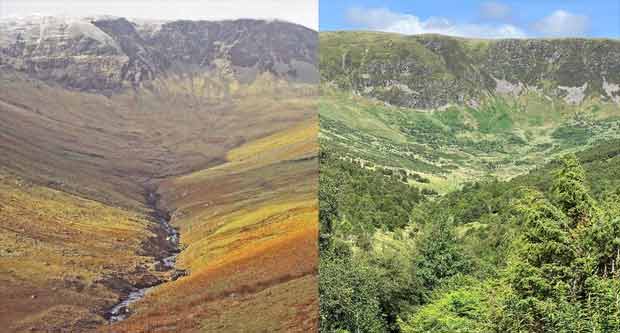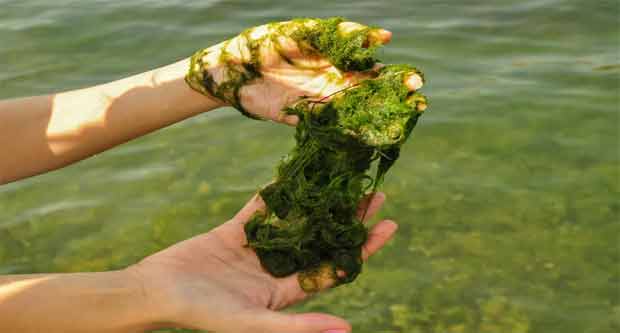Question: Can someone explain the concept of rewilding and its impact in restoring ecosystem?
In recent years, the concept of rewilding has gained significant attention as an innovative approach to conservation. Rewilding aims to restore ecosystems to their natural state by reintroducing native species, allowing natural processes to shape the environment, and reducing human intervention. This article delves into the principles of rewilding, its successes and challenges, and its impact on biodiversity and ecosystem health.
Understanding Rewilding
The Principles of Rewilding
Rewilding is rooted in several core principles:
- Restoration of Natural Processes: Rewilding seeks to restore natural processes, such as predation, grazing, and fire, which shape ecosystems. This involves reintroducing key species that play vital roles in maintaining ecological balance.
- Minimizing Human Intervention: Unlike traditional conservation methods that often involve intensive management, rewilding emphasizes letting nature take its course. This means reducing human intervention and allowing ecosystems to self-regulate.
- Connectivity: Rewilding efforts often focus on creating connected landscapes that enable wildlife to move freely and adapt to changing conditions. This includes establishing wildlife corridors and reducing habitat fragmentation.
- Long-Term Perspective: Rewilding is a long-term commitment that requires patience and perseverance. The goal is to create self-sustaining ecosystems that can thrive for generations.
Key Species in Rewilding
Certain species, known as keystone species, play crucial roles in rewilding efforts. These species have a disproportionate impact on their ecosystems and can drive significant ecological changes. Examples include:
- Wolves: In places like Yellowstone National Park, the reintroduction of wolves has led to a cascade of ecological benefits, including the regulation of prey populations and the restoration of vegetation.
- Beavers: As natural engineers, beavers create wetlands that support diverse plant and animal communities. Their dam-building activities help to regulate water flow and improve water quality.
- Large Herbivores: Species like bison and elephants shape landscapes through their grazing and browsing behaviors. They help maintain open habitats and promote plant diversity.
Successes of Rewilding
Yellowstone National Park
One of the most celebrated examples of rewilding is the reintroduction of wolves to Yellowstone National Park in the United States. In the 1990s, wolves were brought back to the park after being absent for nearly 70 years. The impact was profound:
- Trophic Cascade: Wolves regulated the population of elk, their primary prey, which had overgrazed vegetation in the absence of natural predators. This allowed willow and aspen trees to recover, benefiting a wide range of species.
- Biodiversity Increase: The recovery of vegetation created habitats for birds, beavers, and other wildlife. Beavers, in turn, created wetlands that supported diverse aquatic species.
- Ecosystem Balance: The presence of wolves led to a more balanced ecosystem, with improved water quality and increased biodiversity.
Knepp Estate
In the United Kingdom, the Knepp Estate is a pioneering example of rewilding on private land. Over the past two decades, the estate has transitioned from intensive agriculture to a rewilding project that emphasizes natural processes:
- Grazing Animals: The introduction of free-roaming herbivores, such as cattle, ponies, and deer, has created a dynamic mosaic of habitats. Grazing and browsing behaviors promote plant diversity and maintain open spaces.
- Biodiversity Boom: Knepp has seen a resurgence of wildlife, including rare species like nightingales, purple emperor butterflies, and turtle doves. The varied habitats support a wide range of plants, insects, and birds.
- Economic Benefits: Rewilding has also brought economic benefits through eco-tourism and sustainable agriculture. Knepp has become a model for how rewilding can coexist with human livelihoods.
Challenges of Rewilding
Human-Wildlife Conflict
One of the primary challenges of rewilding is managing human-wildlife conflict. The reintroduction of predators like wolves and bears can lead to conflicts with livestock farmers and local communities. Effective management strategies, such as compensation schemes and education programs, are essential to address these conflicts and build public support for rewilding.
Ecological Uncertainty
Rewilding involves a degree of ecological uncertainty. The outcomes of reintroducing species and restoring natural processes can be unpredictable. Adaptive management, where strategies are adjusted based on monitoring and feedback, is crucial to navigating these uncertainties and ensuring the success of rewilding projects.
Societal Acceptance
Gaining societal acceptance for rewilding can be challenging, particularly in regions where people are accustomed to intensive land use and management. Education and outreach efforts are necessary to raise awareness about the benefits of rewilding and to address misconceptions.
Funding and Resources
Rewilding projects require significant funding and resources, particularly in the initial stages. Securing long-term financial support and building partnerships with governments, NGOs, and private stakeholders are essential to sustaining rewilding efforts.
Impact on Biodiversity and Ecosystem Health
Biodiversity Restoration
Rewilding has the potential to restore biodiversity by creating habitats that support a wide range of species. The reintroduction of keystone species can lead to trophic cascades, where the effects of predation ripple through the ecosystem, benefiting multiple species. Increased plant diversity, improved soil health, and enhanced water quality are some of the positive outcomes associated with rewilding.
Climate Resilience
Rewilding can enhance ecosystem resilience to climate change by promoting diverse and self-regulating ecosystems. Healthy ecosystems are better able to adapt to changing conditions, sequester carbon, and mitigate the impacts of extreme weather events. Wetlands created by beavers, for example, can store carbon and buffer against floods.
Ecosystem Services
Rewilding provides a range of ecosystem services that benefit both nature and people. These include:
- Water Regulation: Natural processes like beaver damming and wetland creation help regulate water flow, improve water quality, and reduce the risk of floods and droughts.
- Soil Health: Grazing animals and plant diversity contribute to soil health by promoting nutrient cycling and preventing erosion.
- Pollination: Diverse plant communities support pollinators, which are essential for food production and ecosystem health.
Cultural and Recreational Benefits
Rewilding also offers cultural and recreational benefits. Rewilded landscapes provide opportunities for outdoor recreation, eco-tourism, and education. They offer people a chance to connect with nature and experience the beauty of wild, untamed environments.
Conclusion
Rewilding represents a bold and innovative approach to conservation, with the potential to restore ecosystems to their natural state, enhance biodiversity, and promote ecological resilience. While it comes with challenges, the successes of rewilding projects like Yellowstone National Park and the Knepp Estate demonstrate its transformative power.
By embracing the principles of rewilding, we can create landscapes that are not only rich in wildlife but also capable of providing essential ecosystem services and supporting human well-being. As we continue to face the twin crises of biodiversity loss and climate change, rewilding offers a hopeful and inspiring vision for the future of our planet.



